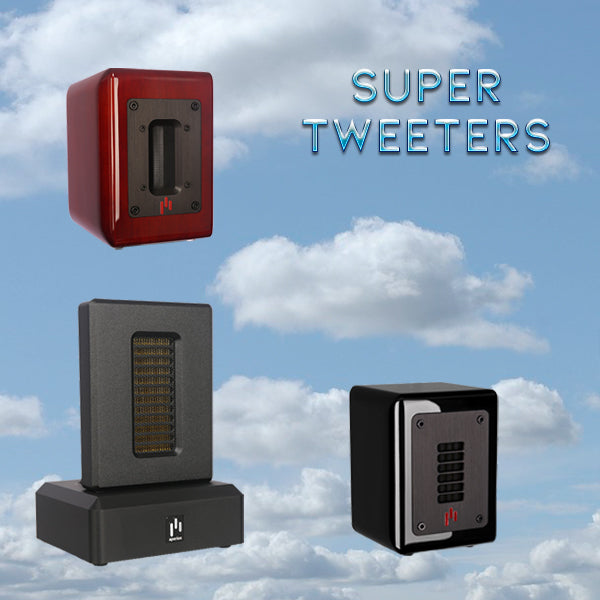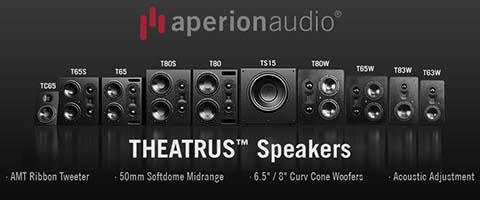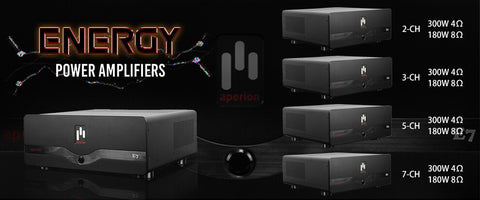By: Professor Humphreys - Speaker Engineer
- - - - - - - - - - - - - - - - - - - - - - - - - - - - - - - - - - - - - - - - - - - - - - - - - - - - - - - - - - - - - - - -
Optimizing A Multi-channel Set-Up For Surround Sound
The explosion of home theater and multi-channel music has changed the landscape of home audio forever. Instead of your entertainment system consisting of monstrous floor mounted stereo speakers of the 70’s and 80’s, you can build your system out of a combination of small speakers and a powered subwoofer to supply the deep, rich bass. You may also choose full-range tower speakers or powered towers with built-in powered subwoofers. These speakers are arranged around the home theater with three speakers in front of you, two surround speakers on the sides and in some cases one or two back surround speakers behind you.
Each room is unique. It’s quite unlikely that your living room was specifically designed to be a home theater, so the acoustic properties won’t be perfect. You can start by following these guidelines for setting up your speakers, but don’t be afraid to experiment. Often a small difference in speaker placement can make an impressive improvement in your sound. Besides, it’s fun!
- Be aware! Many bare surfaces in a room can add echo, harshness to the sound or muddy home theater dialogue. Sound absorbing and scattering surfaces like carpeting, furniture, bookcases and drapes help tremendously.
- Perfectly square rooms, or very long rooms can be tough on acoustics and may need additional sound absorption.
- If possible, the seating area should be centered in your room.
- For the best bass possible, try not to place your seating area so that it is against a wall or at a position that is half or a quarter of the room’s width or length.
- A speaker’s bass output grows stronger as it is moved closer to the corners. If a speaker is placed too close to a corner it can sound muddy or boomy. Amplified subwoofers that have bass controls are okay to place in corners.
- Speakers can create a “soundstage”, an illusion of instruments and voices with precise locations in three-dimensional space between and behind the speakers. Having excess room echo will lessen this impressive effect – so be careful.
- - - - - - - - - - - - - - - - - - - - - - - - - - - - - - - - - - - - - - - - - - - - - - - - - - - - - - - - - - - - - - - -
Speaker Placement For Surround Sound
Left and Right Front Speakers
Try to place the front speakers in-line with your TV (flush with the screen), separated by 45° when viewed from the seating position. They should be positioned at the same height as the listeners’ ears when seated. 28-30 inch stands put your bookshelf speakers at the correct height.
Center Speaker
A good position for the center speaker is… in the center! Yep, right on top of your TV (or just below, if your TV is mounted high). Try to place the center speaker on the same plane, or slightly behind the plane formed by the front left and right speakers. If it is placed low or high, you may want to aim the speaker up or down at the listening area.
Surround Speakers
For home theater, the surround speakers should be placed directly to each side of the listener or slightly behind them. Placing the speakers two feet above the listeners’ ears can help to minimize localization effects. For SACD & DVD-A use, it is best to position the surround speakers at ear level. See illustration.
Back Surround Speakers (6.1 & 7.1 channel systems)
If possible, the back surround speaker(s) should be placed directly behind the listeners at the same height as surround speakers. See illustration.
The Subwoofer
The human ear cannot localize the long wavelengths of bass frequencies below about 100Hz. As long as your Subwoofer is set at the recommended cut-off of 100Hz or below, you can place it pretty much wherever you want (try not to place it behind the listening area, though.) Keep in mind that the further you place a subwoofer from a corner or the listening position the more uneven the bass will be spread throughout your room. If the distance from the sub to the listener is significantly different (>3’) than the distance from the front and center speakers to the listener, try using the phase reverse switch to see if it improves the bass response.
|
|
 |

Complete Your Sound System Solution

Sign up for our newsletter below, and join our social media groups to stay up to date with the latest news and information from Aperion Audio!
 |
 |







